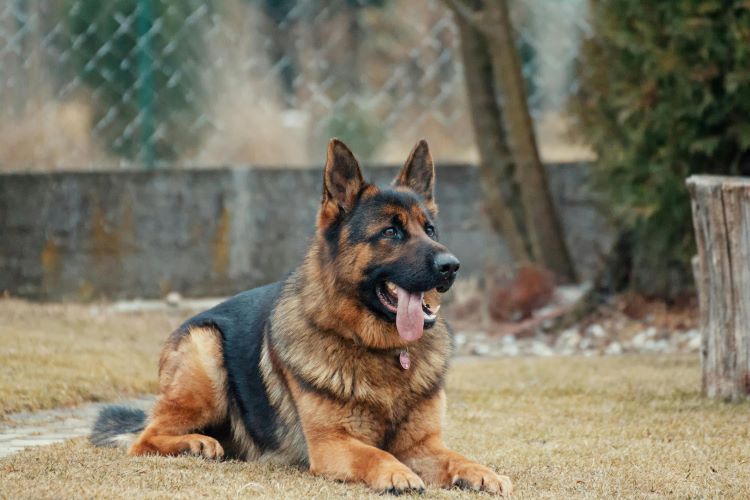Ready to help treat your pet to a healthy life?
Dog Hot Spots: What They Are & How to Treat Them
By : Trupanion Staff | Updated Mar 26, 2024

If you're a dog owner, the sight of your best friend incessantly scratching, licking, or biting at a particular area on their skin can be both distressing and perplexing. While there are many causes of this behavior, one of the most common is none other than the dog "hot spot." These localized areas of inflamed, irritated skin are common dermatological issues in canines, though they can still cause a lot of confusion and alarm among pet parents.
Fortunately, you can be more prepared to help your dog by learning what canine hot spots are as well as their causes, symptoms, and treatment options. Let's dive in!
What is a dog hot spot?
Dog hot spots are itchy, painful, and messy, and can appear suddenly in both dogs and cats, but are seen more frequently in dogs. In medical terms, a dog "hot spot" is known as pyotraumatic dermatitis or acute moist dermatitis.
This type of skin inflammation describes a dog hot spot that shows up suddenly, rather than a chronic skin lesion. The lesions are moist, because inflammation is causing leakage of blood from the affected skin’s tiny blood vessels.
Unlike many other canine skin conditions, dog hot spots are localized areas of moderate-to-severe skin inflammation that typically crop up quickly. This means it is not unusual for a dog hot spot to show up in only 10 minutes under favorable conditions. Hot spots can occur year-round, but they are seen more frequently during the warm months.
Signs
Dog hot spots are usually very visible and easy to identify, although they may be more concealed on pets with long fur. The lesions are raw, red, and oozing, can vary in size, and are almost always itchy. They may also smell, depending on the severity and the cause. Nevertheless, the first sign your pet has a hot spot could just be that they keep biting, scratching, or licking a specific area.
Your dog will pay a lot of attention to a hot spot, because the inflammation makes the lesion exquisitely painful, and they may cry as they scratch or chew the spot. If you're concerned your dog has a hot spot (or multiple), give your veterinary office a call and try to prevent your dog from touching the spot until it can be properly identified.
What causes hot spots?
Dog hot spots can be caused by any irritation to your dog’s skin. Common causes include:
- Insect (e.g., flea or mosquito) bites
- Allergies
- Atopic dermatitis (a common skin condition often caused by allergies)
- Excess moisture on the skin
- Heavy, dense hair coats
- Matted hair
- Skin injuries (e.g., scrapes or cuts)
- Clipper burn (irritation from grooming)
- Repeated
A slightly irritated skin area turns into a hot spot when your dog starts scratching and chewing the sore spot, traumatizing the skin, and causing an oozy lesion that not only still itches, but now also hurts. Dogs and cats have bacteria near their mouths called Staphylococcus intermedius, which is the most commonly found causative agent in hot spots.
How are dog hot spots diagnosed?
Typically, your veterinarian will diagnose a hot spot based on your pet’s physical exam and recent history. A superficial, itchy, and painful skin lesion can be quickly diagnosed, but some pets will have hot spots hiding under their thick coats or matted fur. Most hot spots are easy to find.
A dog hot spot can occur due to a variety of causes, often linked to its location; for example, a hot spot on the hip may indicate underlying joint-disease pain, while a hot spot near the ear may mean an external ear infection.
Treatment for canine hot spots
If you have an itchy or uncomfortable pet, you naturally want a fast-working hot spot remedy. And the good news is that this condition is treatable. Tiny hot spots may even resolve on their own. But because they tend to enlarge quickly, dog hot spots should always be evaluated by your veterinary health care team. Even if your pal has had hot spots before, don't try to diagnose and treat a new flare up on your own — other skin conditions can mimic hot spots, so professional assessment is needed to be sure (and safe!)
Treatment, if needed, usually centers on keeping the affected area dry and out of harm’s reach in addition to treating any underlying condition detected.
The fur surrounding the lesion will be clipped away to reveal the entire hot spot and ensure thorough treatment, which may include:
- Cleaning the wound with an antimicrobial solution, which will cause fast, effective improvement
- Applying astringents directly to the affected site to dry the lesion, decrease exudation, and promote scab formation
- Using topical steroids for 7 to 14 days to decrease inflammation and pain associated with the lesion until the lesion is healed; the steroids can be applied using a spray that contains a corticosteroid and astringent agent, or an ointment containing a potent steroid
- Having your dog wear an Elizabethan collar (e-collar or “cone of shame”) until the itchiness decreases, to prevent further damage to the lesions
- Using topical or oral antibiotics (or allergy medications) as directed by your pet's veterinarian
Most dog hot spots will resolve in less than a week with appropriate treatment. Recurrent lesions will warrant further investigation by your veterinary team.

Can dog hot spots be prevented?
Nobody wants to see their pet in pain or discomfort. There is no guaranteed way to prevent canine hot spots, but you can help reduce their likelihood by tackling the common causes of them. Here are four things you can do to help prevent hot spots in your dog:
1. Promote good hygiene
Good hygiene and grooming standards can help prevent a variety of skin conditions, including hot spots. This includes ensuring your dog's coat is completely dried off post-bathtime as well as detangled regularly (if they have a long coat). If you trim their fur, however, take caution to not cut too closely. Some dogs have sensitive skin and may have bad reactions to grooming tools (clipper burn), which can cause hot spots rather than help prevent them.
2. Address your pet's mental state
Many dogs will lick or scratch themselves due to boredom or stress. If your dog is showing signs of stress, it's important to identify the cause and work toward easing your pet's triggers. In both cases of boredom and stress, however, you can help stop your dog from self-destructive behavior via distractions. Try engaging them with a toy or take them for a walk. Ensure they're getting plenty of daily exercise and mental enrichment to help discourage obsessive licking and scratching.
3. Practice parasite prevention
If you live in an area where fleas and ticks are a problem, be vigilant with parasite preventives. Not only can flea and tick bites lead to irritation on their own, but allergies to them can start your dog on a vicious itch-scratch cycle that results in hot spots. Fleas and ticks can also cause further irritation to existing hot spots and make the condition more challenging to treat. So, never skip a parasite prevention treatment. If you don't currently have a flea and tick prevention plan in place, talk with your veterinarian about effective options.
4. Focus on your dog's overall health and wellbeing
In addition to more specific preventative measures, you'll want to ensure your pet is in overall good health. Skin conditions can both be triggered and worsened by underlying health conditions, so routine veterinary care is essential. Many illnesses can't be predicted and can be difficult to detect on your own, so make sure you've got a good dog health insurance plan in place to ensure your pet can get the treatment they need, when they need it.
